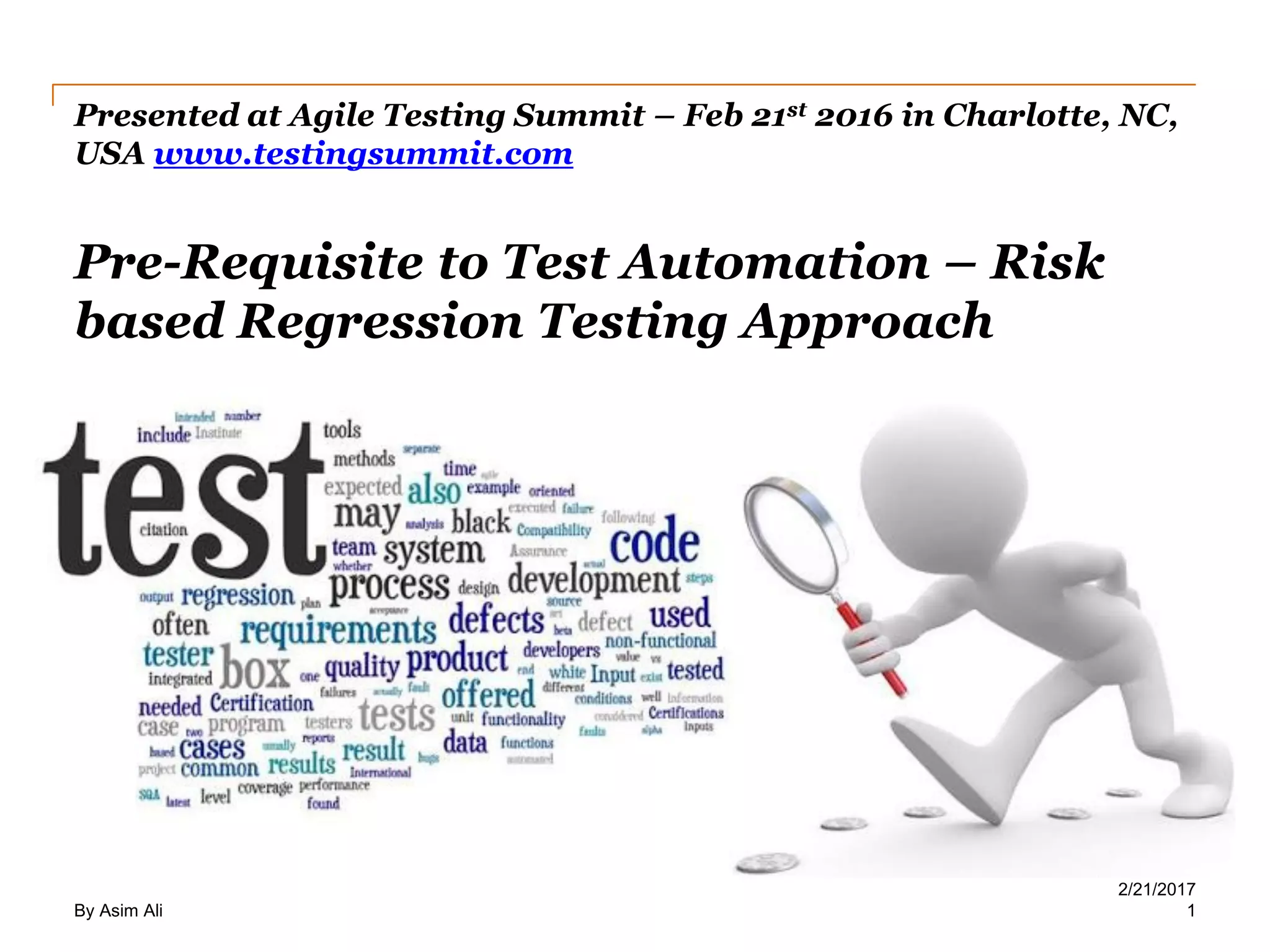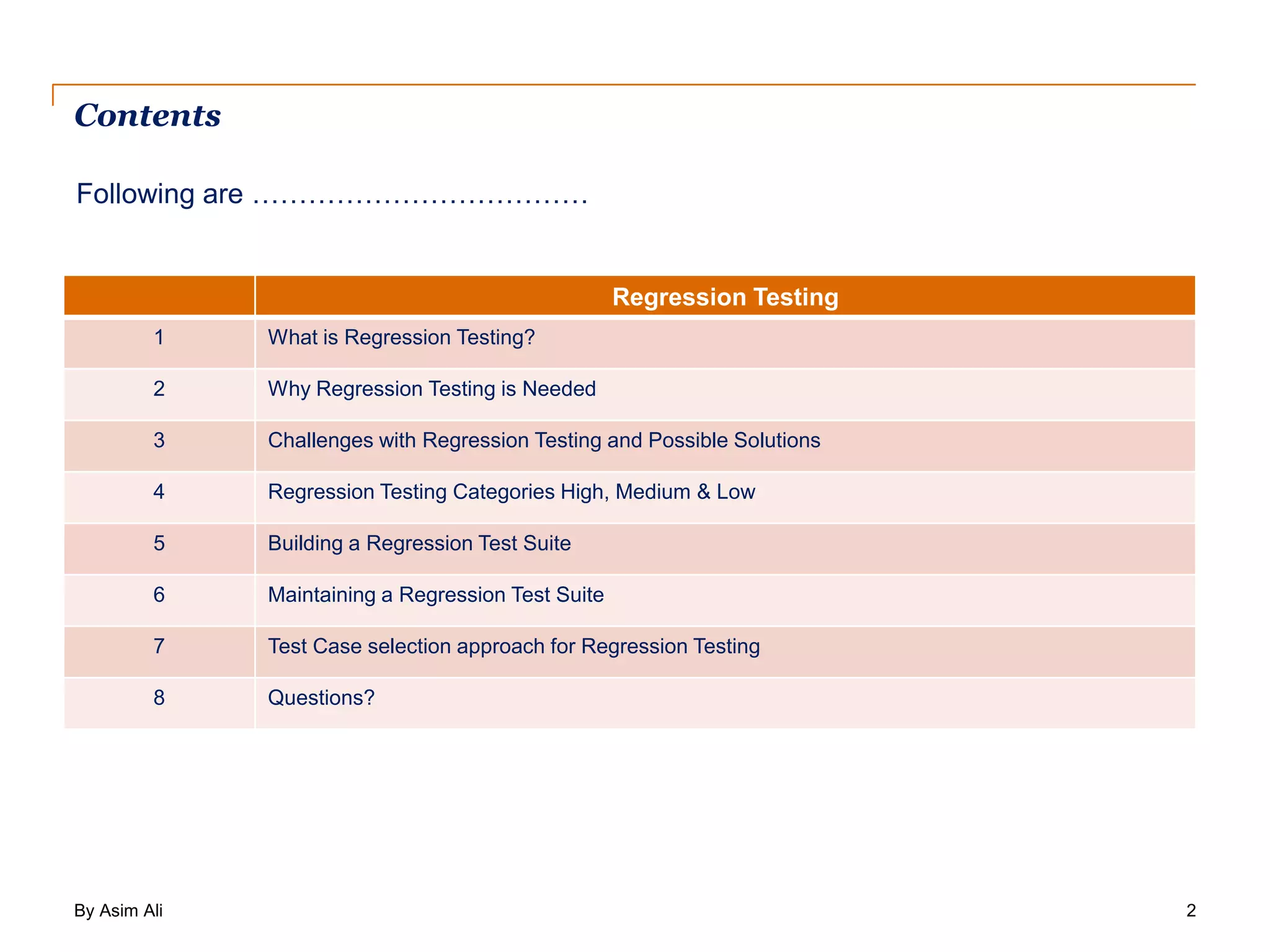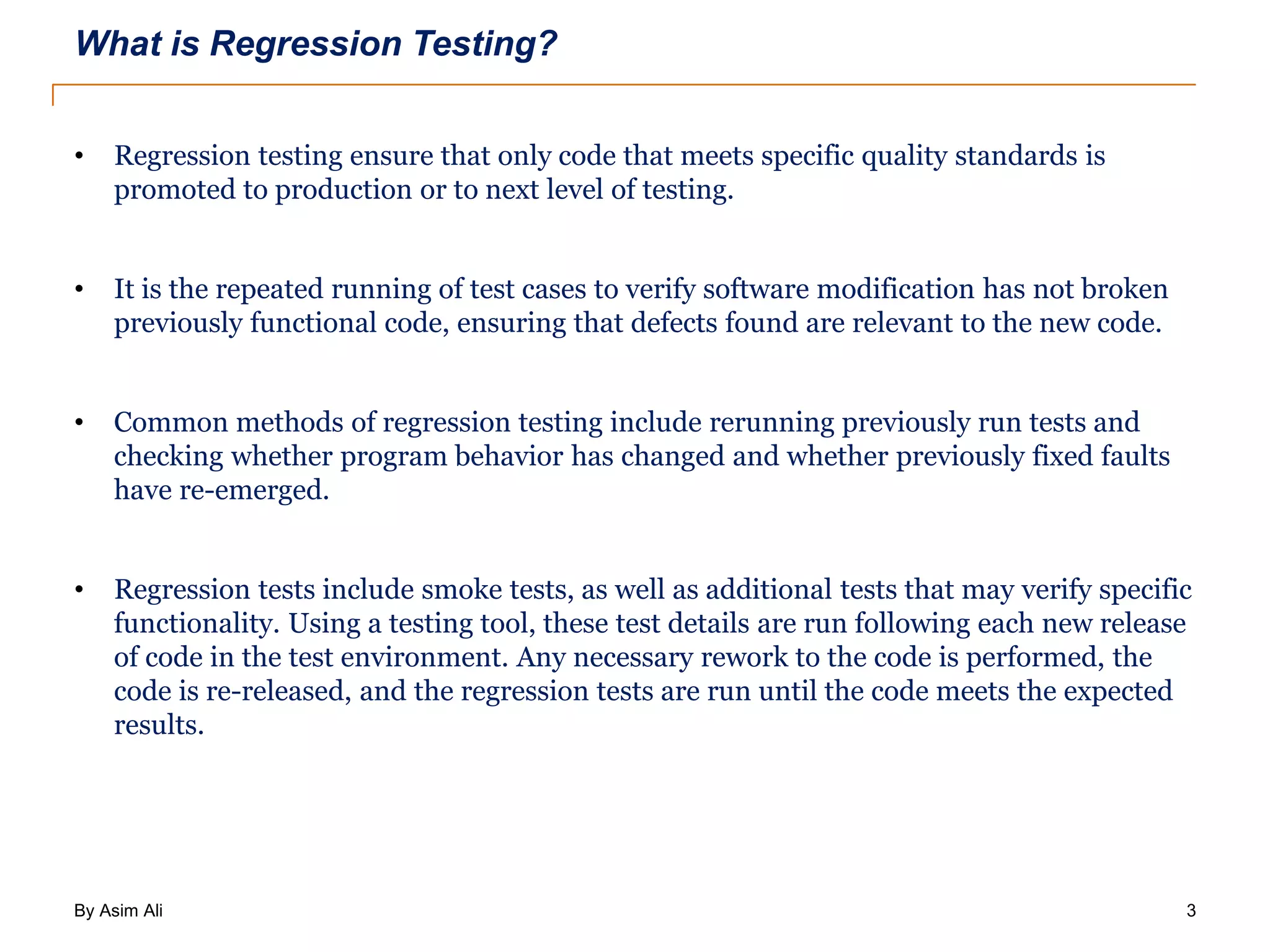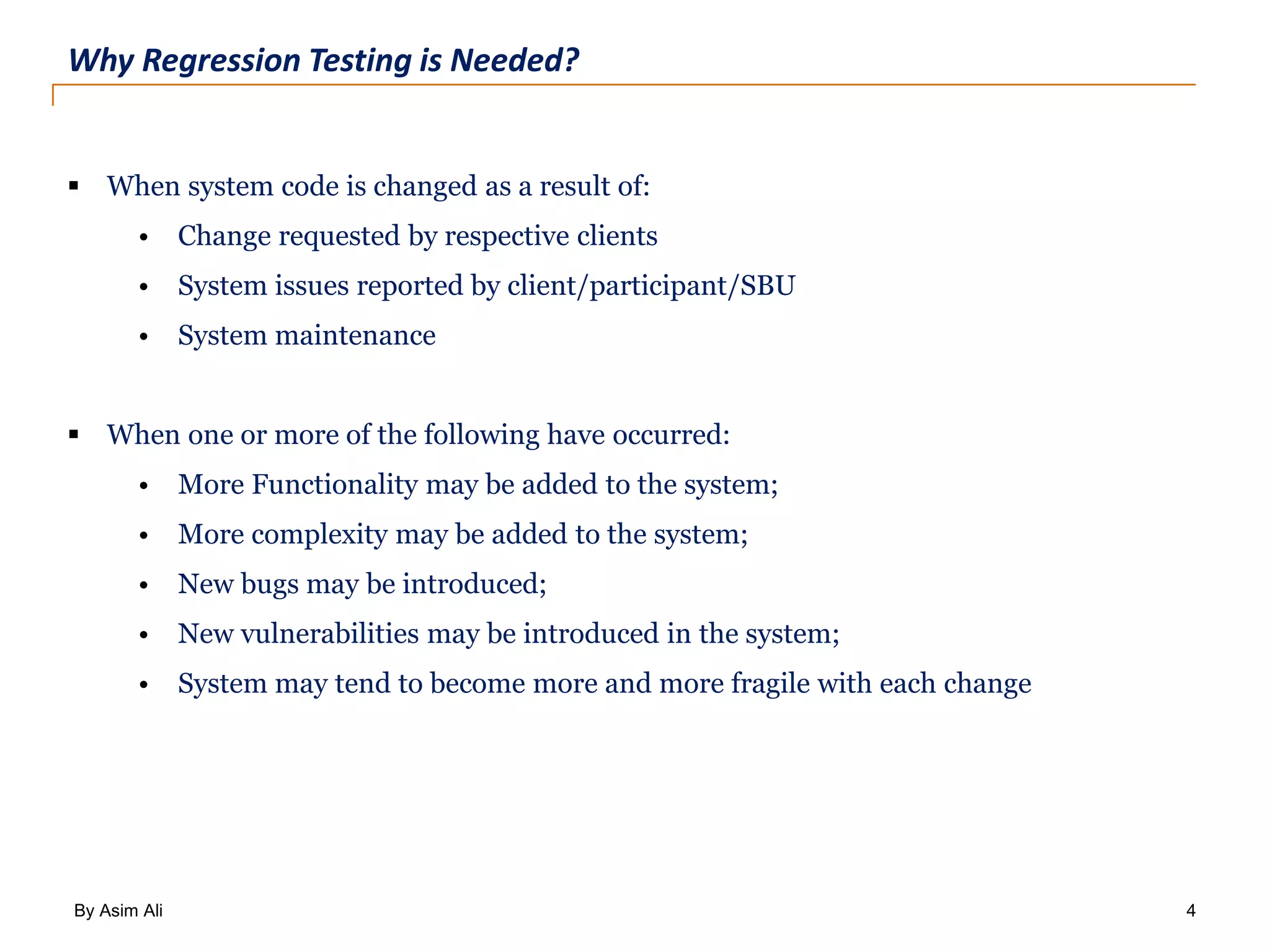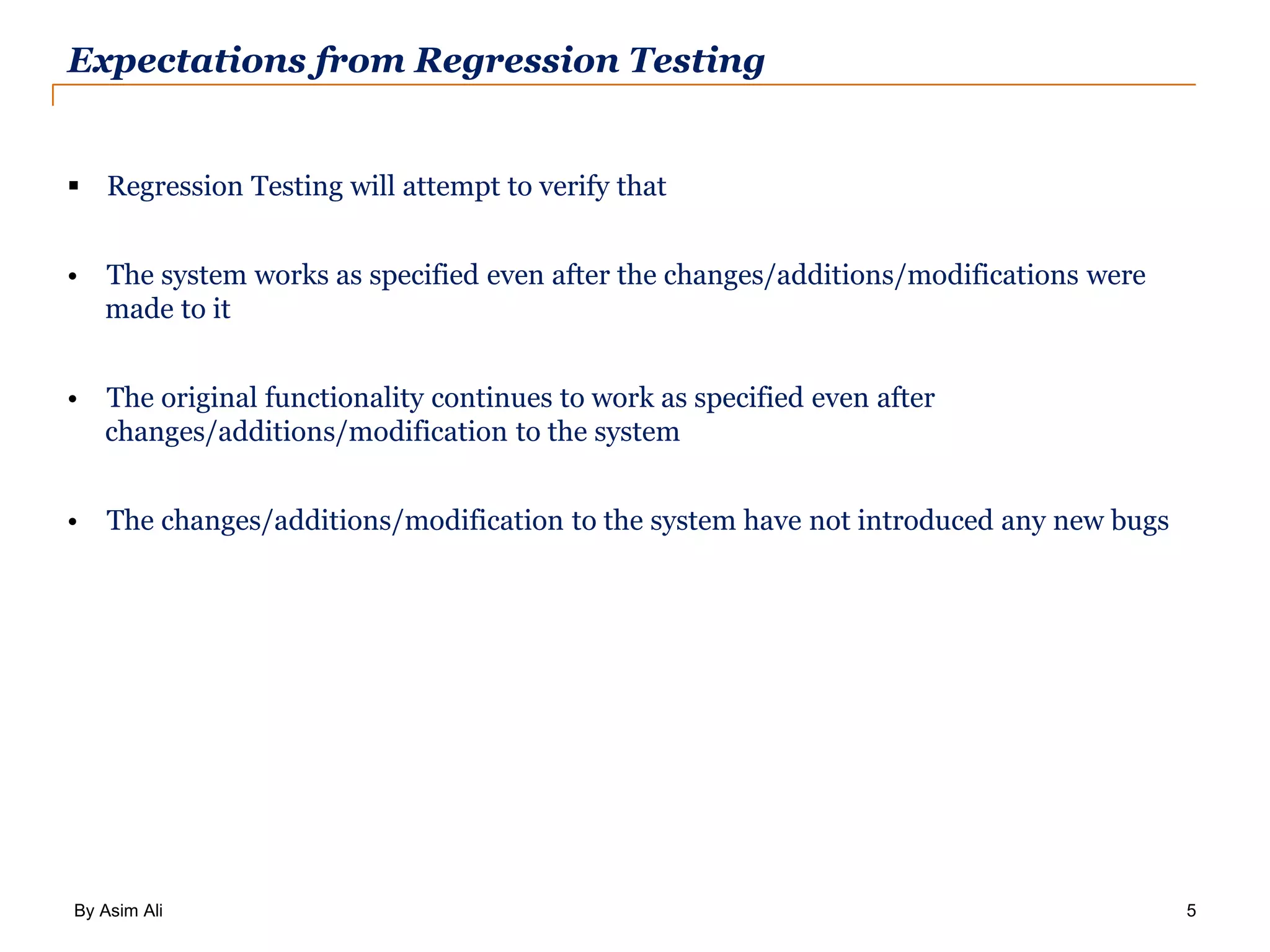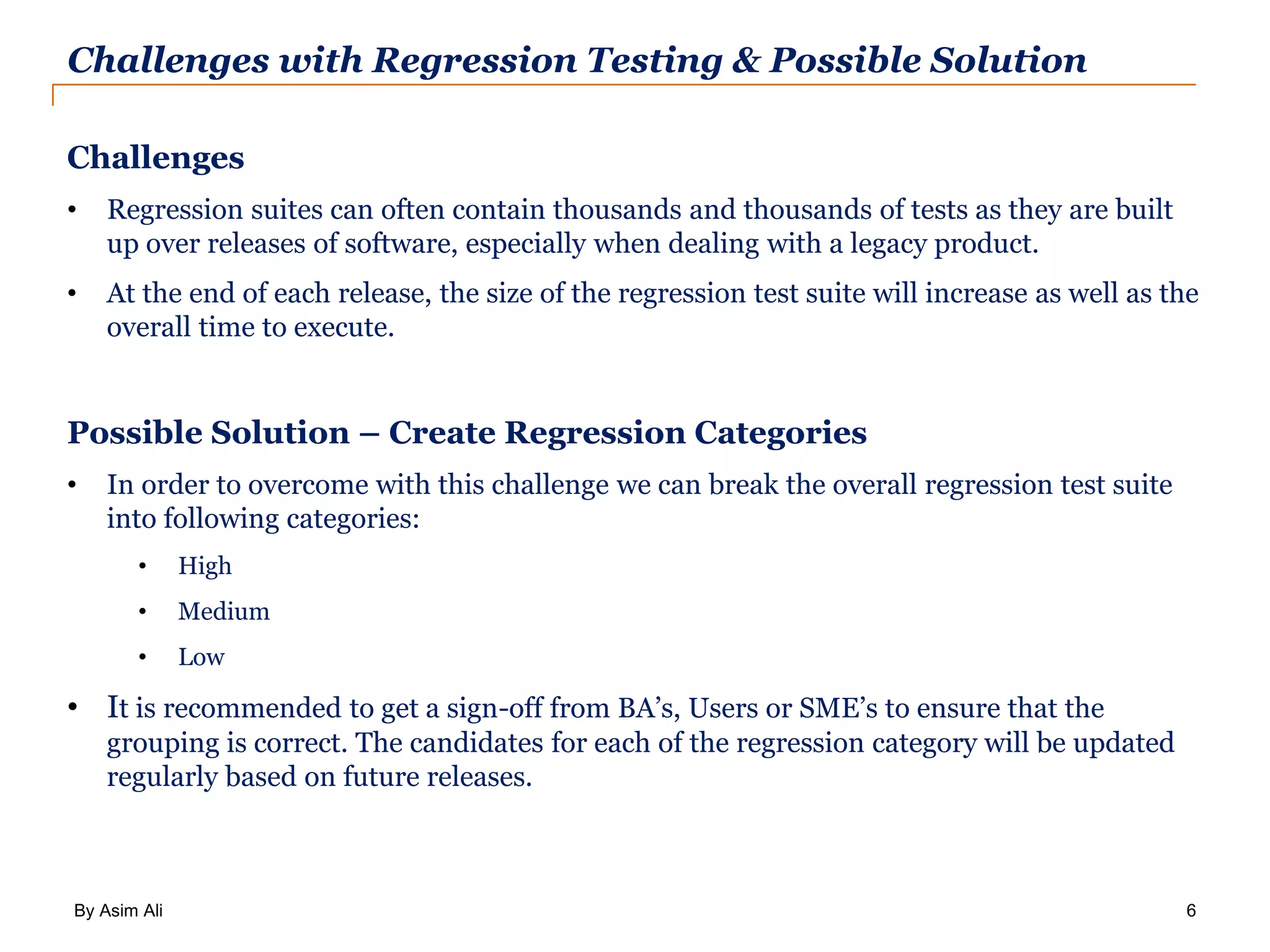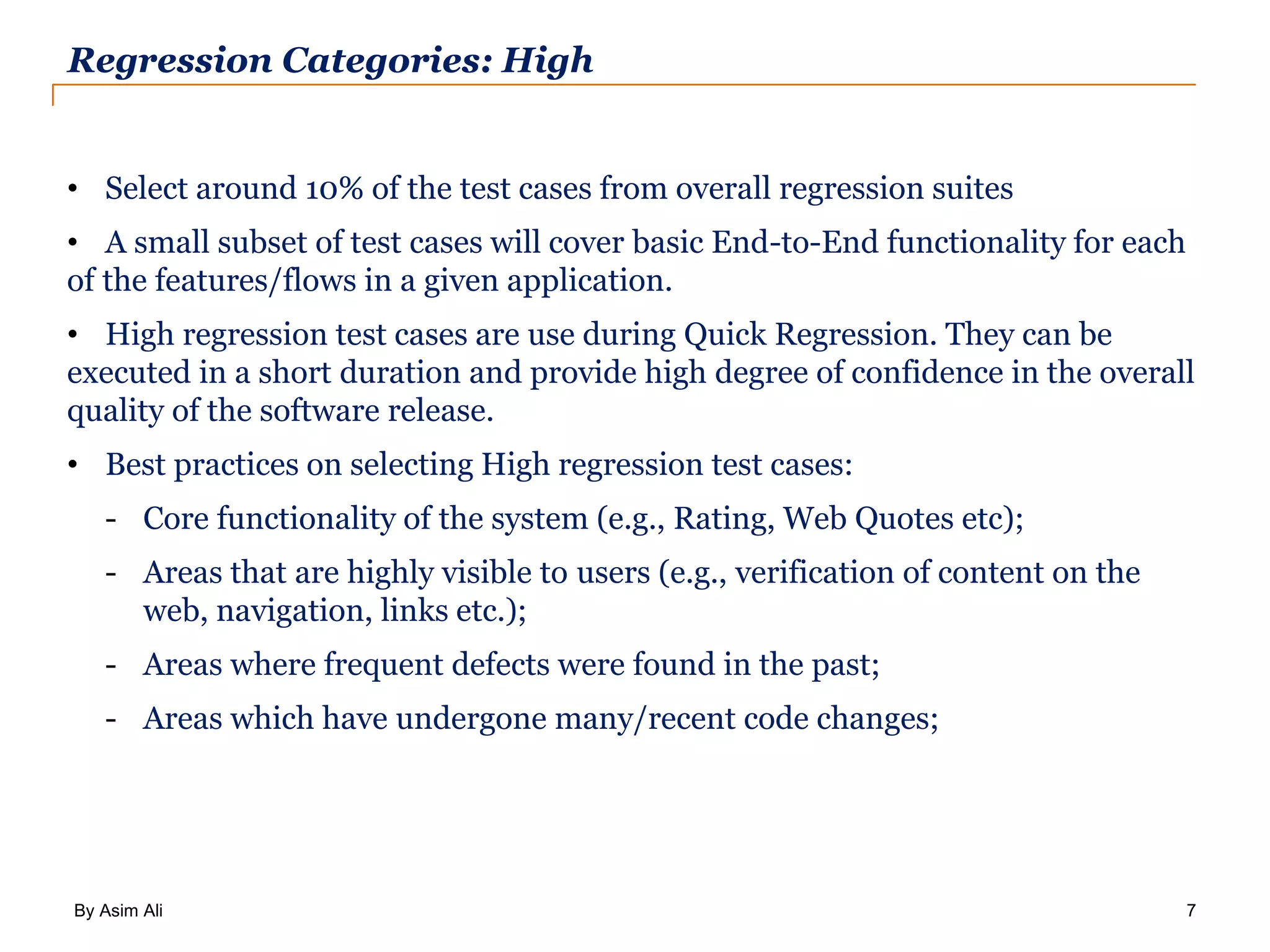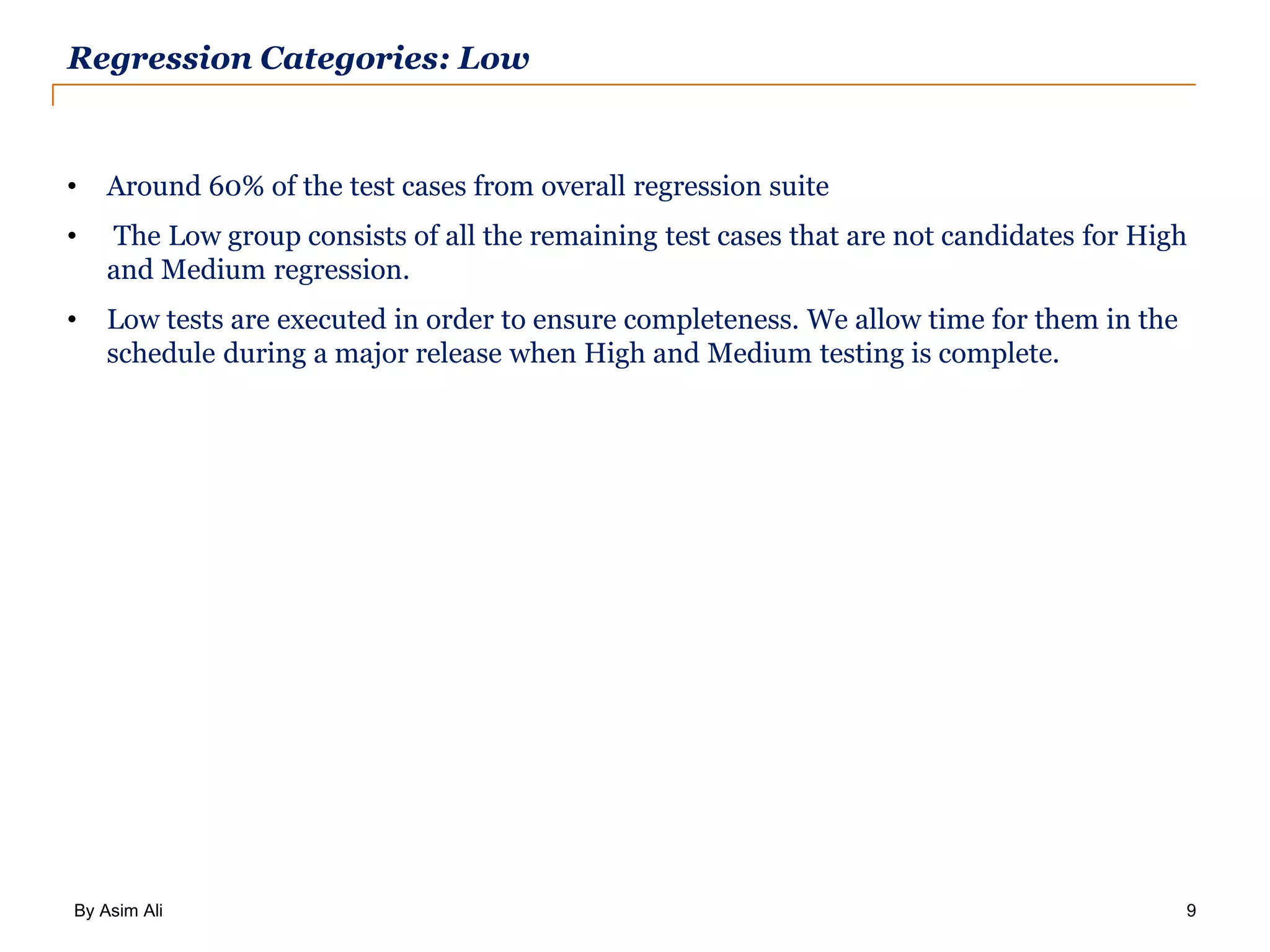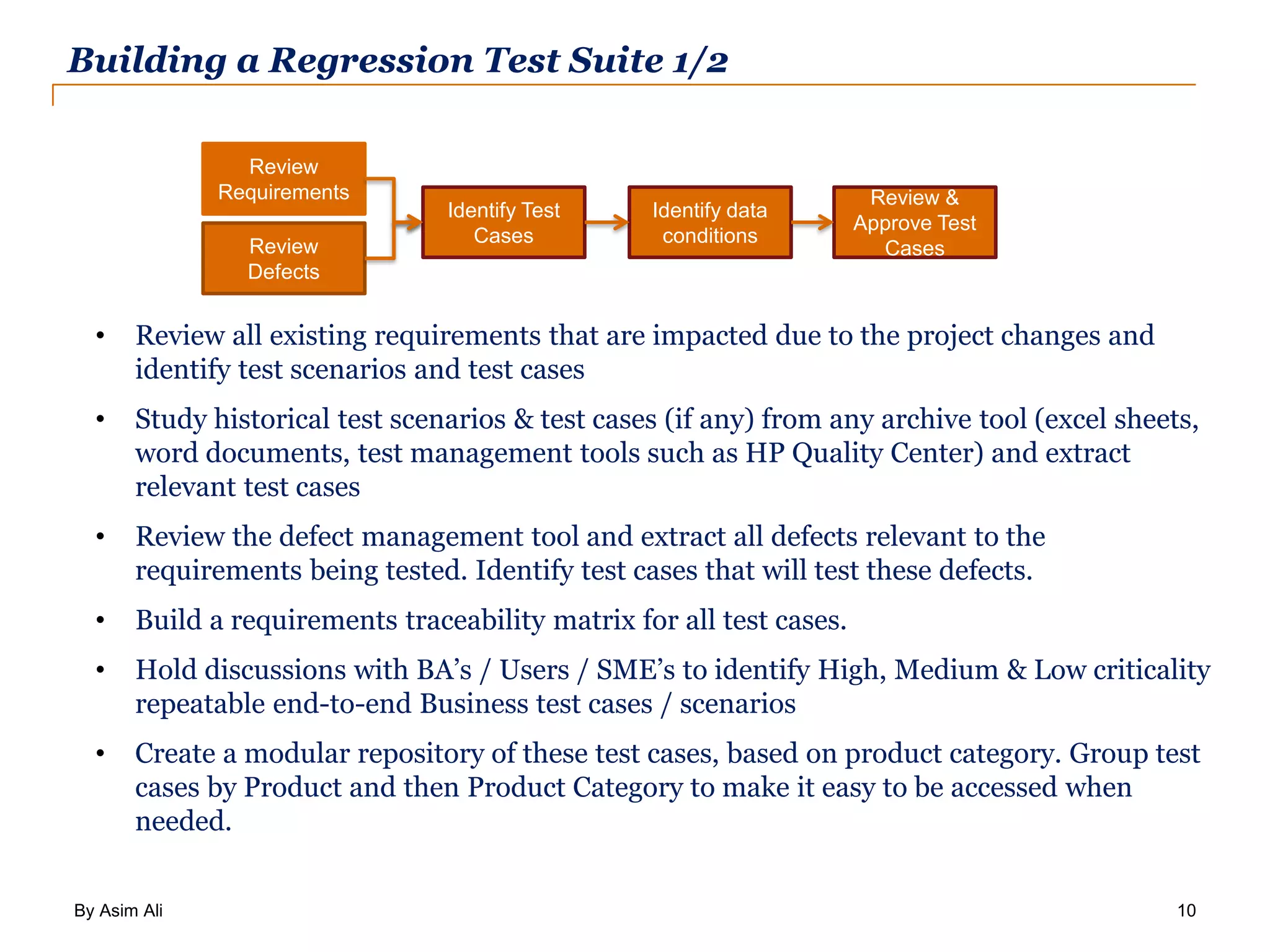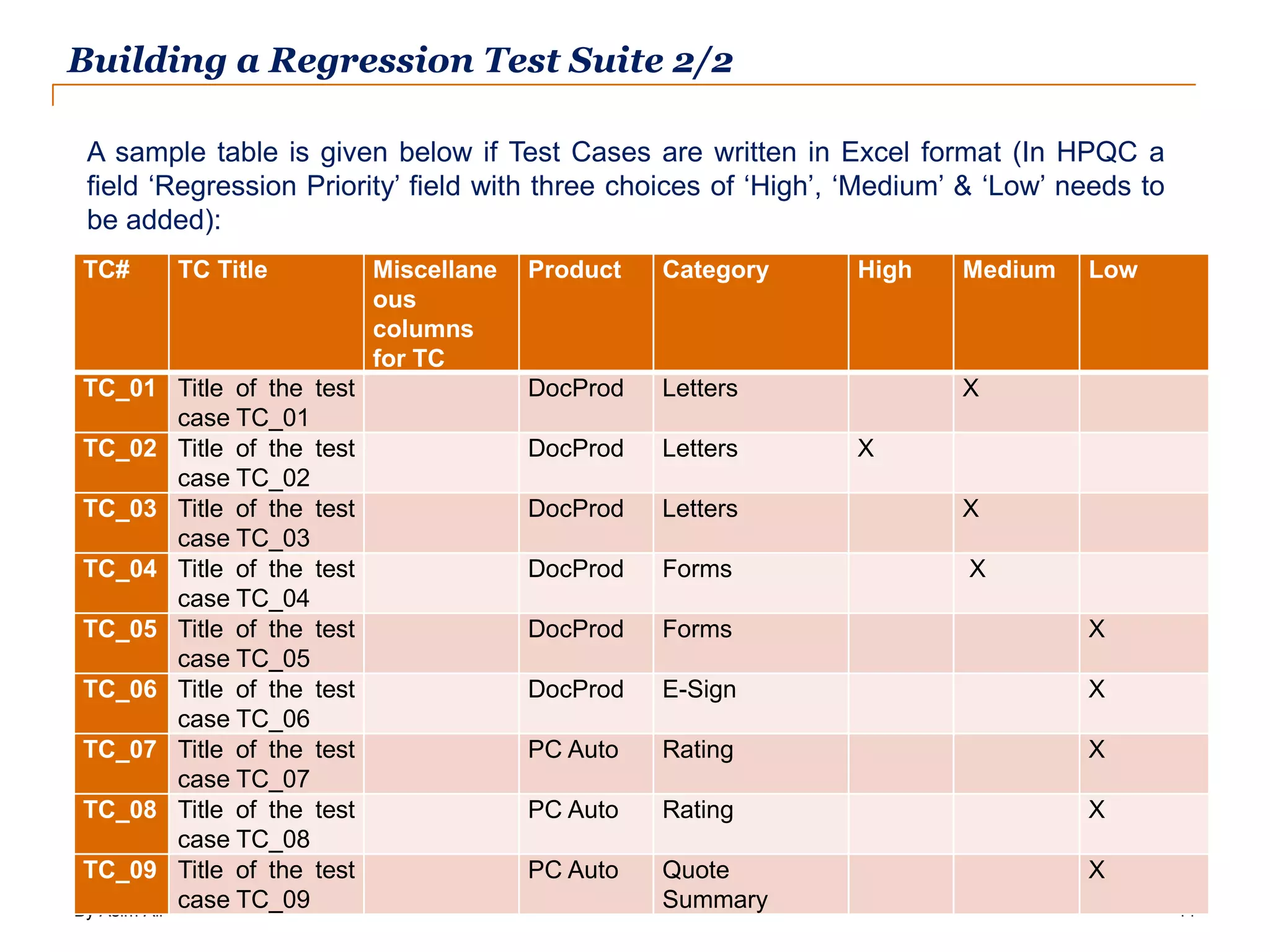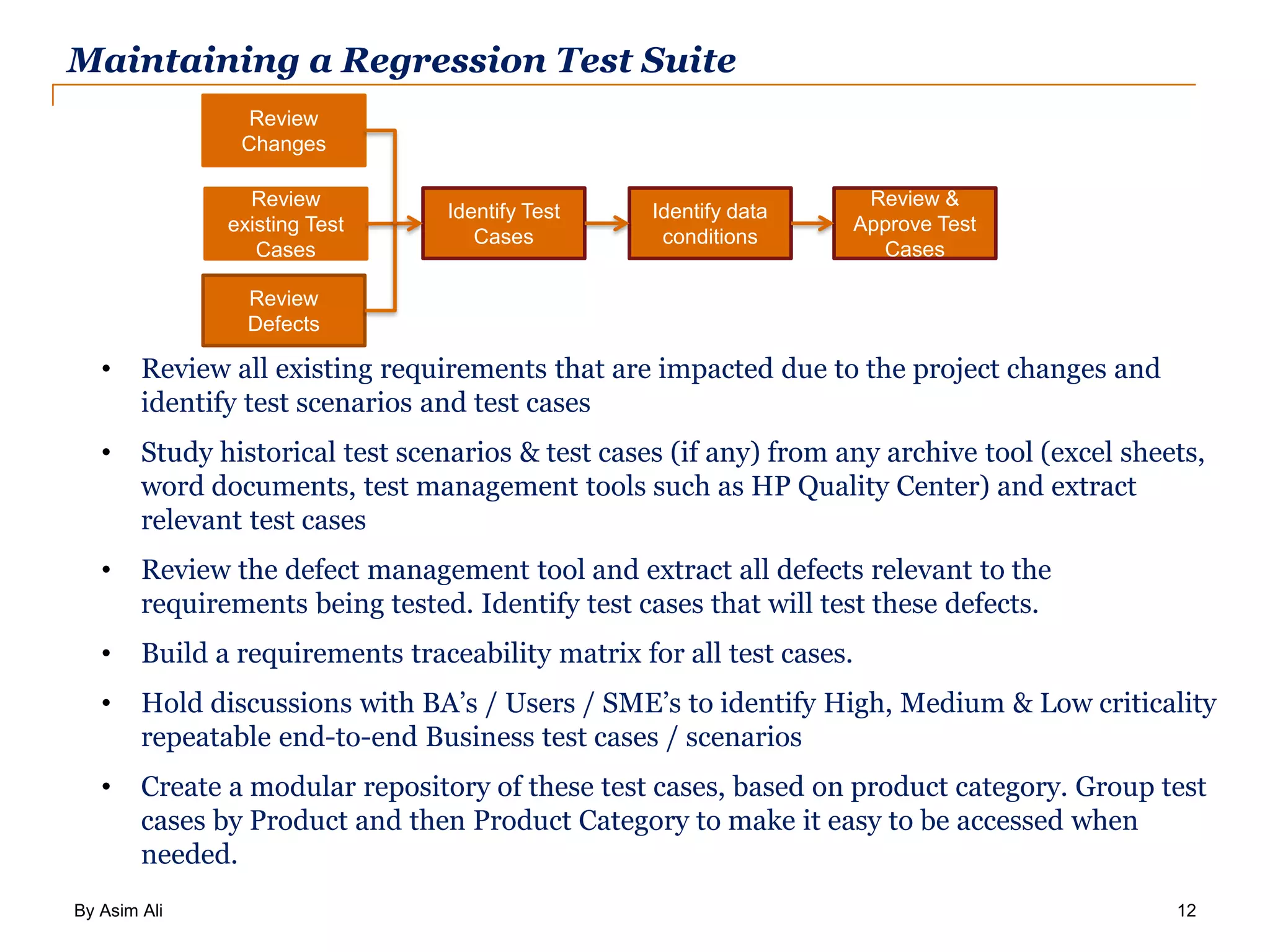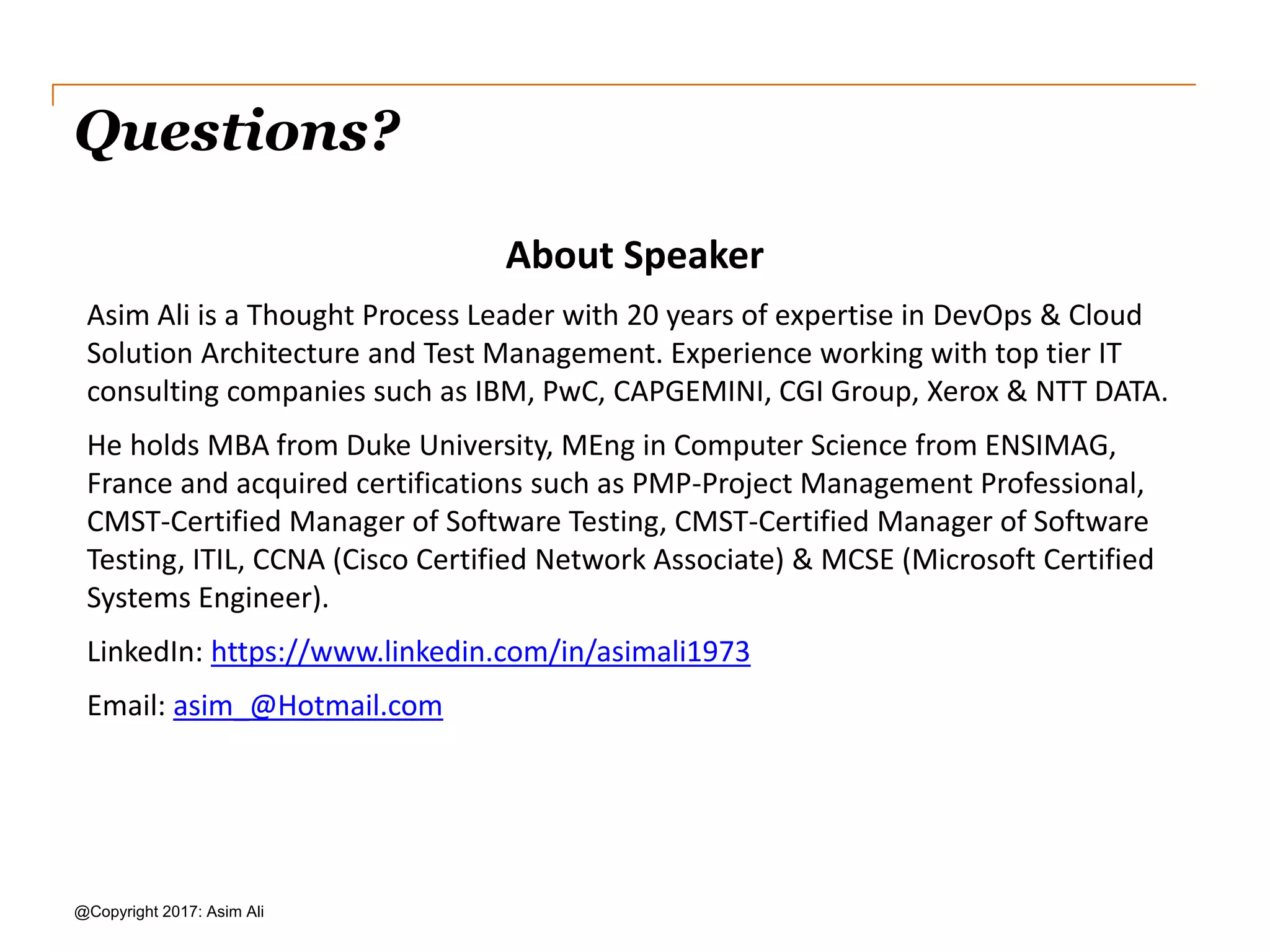The document discusses regression testing, emphasizing its importance in ensuring code quality and functionality after modifications. It outlines the challenges faced in maintaining regression test suites, including their size and complexity, and suggests categorizing tests into high, medium, and low priority to manage them effectively. Best practices for building and maintaining a regression test suite are provided, along with insights from Asim Ali's expertise in test management.
